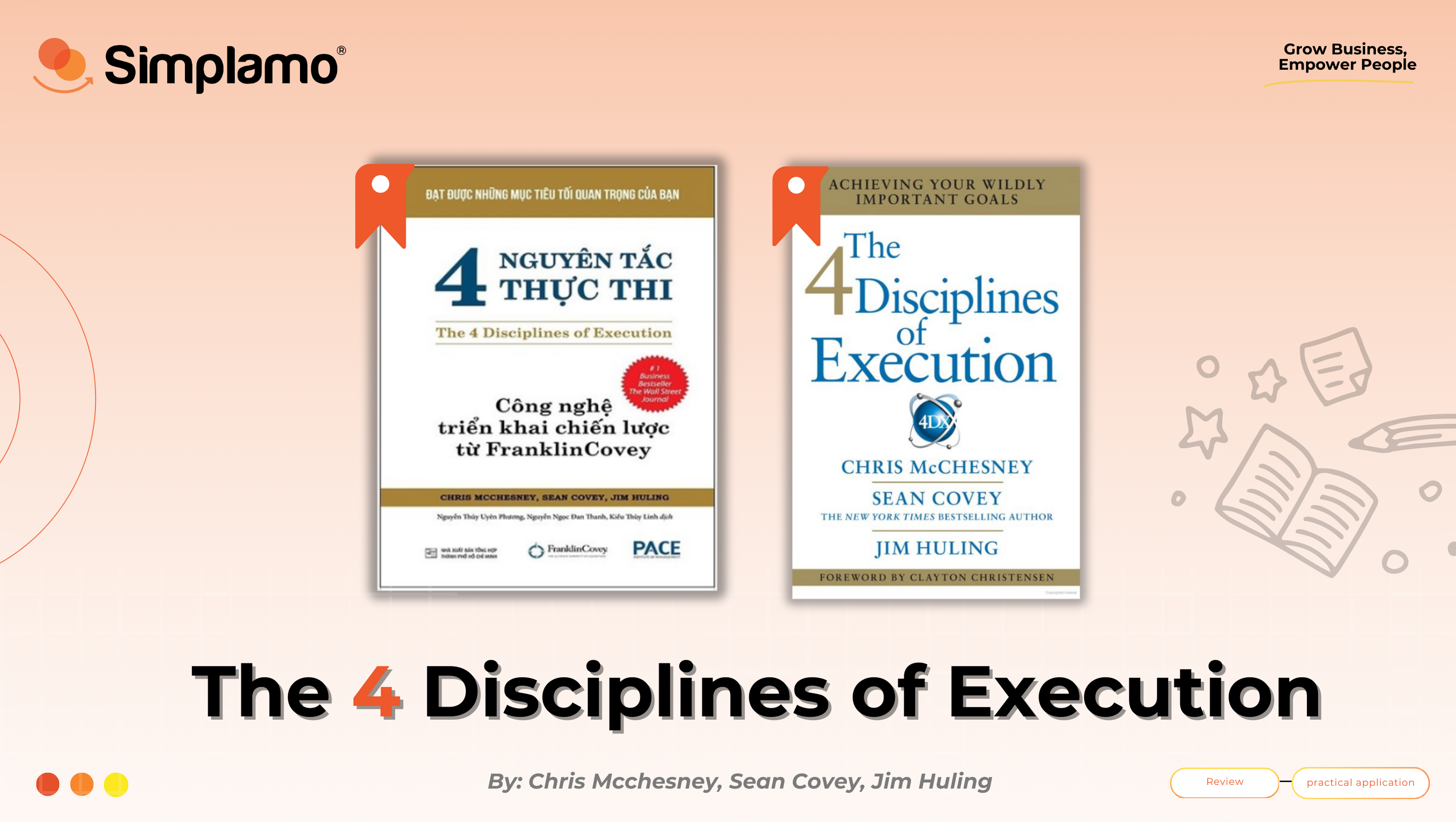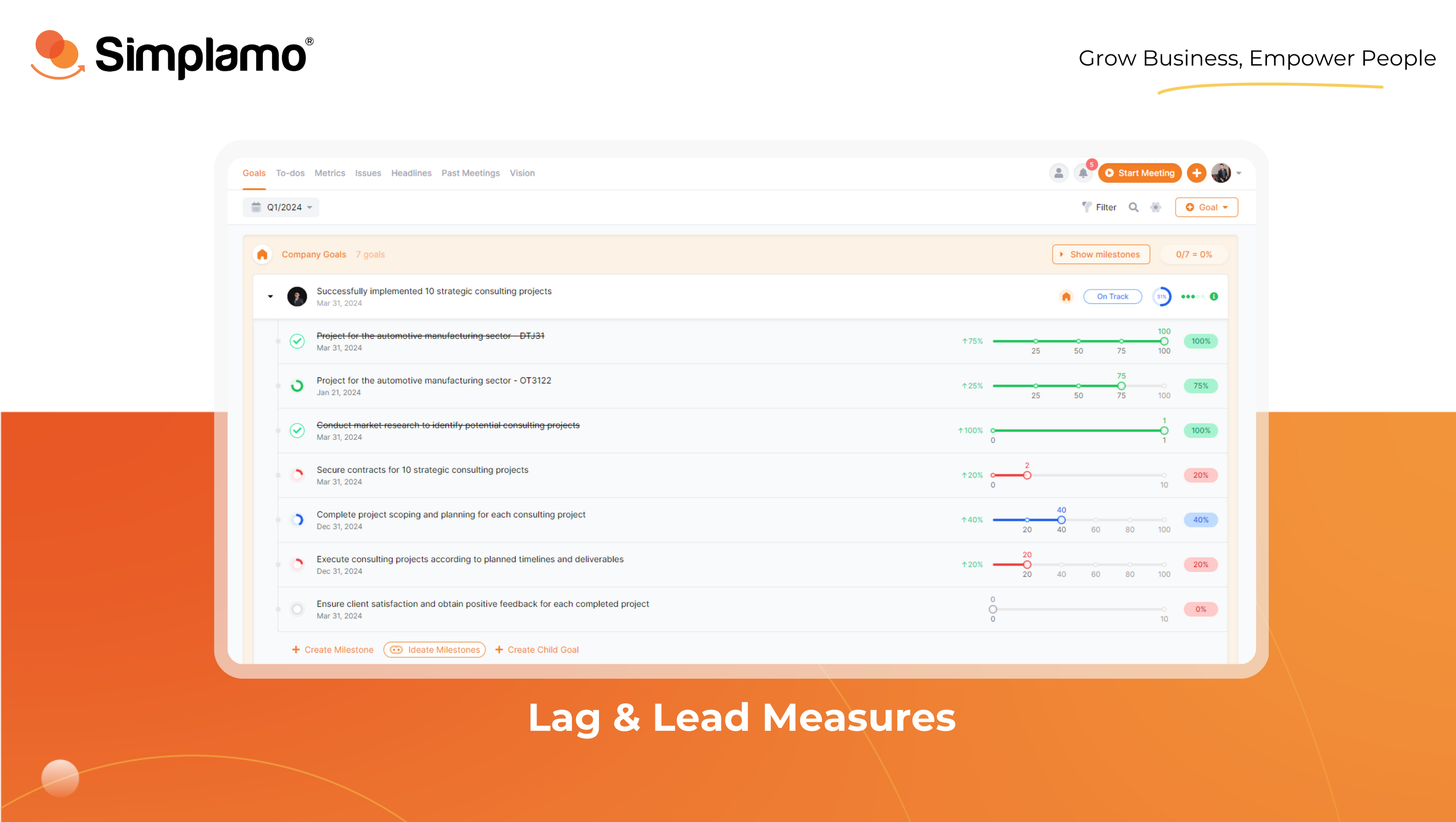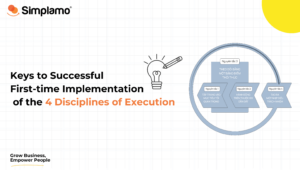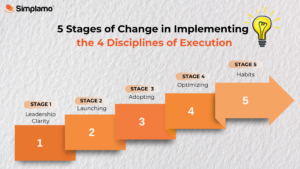There are two main issues that a leader can significantly influence in the process of achieving results: Strategy and the ability to execute that strategy. When asked which of these two issues is more challenging, most leaders worldwide provide an immediate answer: “Executing the strategy.”
If executing the strategy is also a hindrance in your business operations, explore the book “The 4 Disciplines of Execution” by authors Chris McChesney, Sean Covey, and Jim Huling.
This book is among the top-selling business books globally, as voted by The Wall Street Journal. Before embarking on writing this book, the author team completed over 1500 projects applying the 4 Disciplines of Execution across various industries.
This article aims to summarize key points from the book “The 4 Disciplines of Execution.” In Part I, we’ll delve into the background that led to the development of these disciplines and the primary challenges causing execution lapses.
I. Business Context
The author’s team surveyed various businesses to identify the reasons behind execution challenges in most organizations. Here are some notable findings:
- Unclear goals: Only 15% of employees can articulate one of the top 3 important goals set by their leaders, with clarity diminishing as you move down the leadership hierarchy.
- Lack of commitment: 51% of employees express enthusiasm for common goals, while the remaining half simply follow the crowd without genuine commitment.
- Weak sense of responsibility: 81% of surveyed individuals state they do not feel responsible for the organization’s goal execution process.
In essence, the primary reasons for execution failures are a lack of clear goals, commitment, specific guidance, and responsibility. Deeper issues may involve trust, inadequate rewards, weak development processes, and poor decision-making.
However, the true adversary to execution is something few anticipate: the day job – the whirlwind. The day job consumes the energy and time of the entire team, acting like a tornado sweeping through day after day.
Surprisingly, after 3 to 6 months, you may find that your set goals have hardly seen any progress. It’s not that attending to daily tasks is detrimental – it’s indeed solving the immediate survival challenges for your business. However, neglecting the crucial goals means your organization may not have a future.
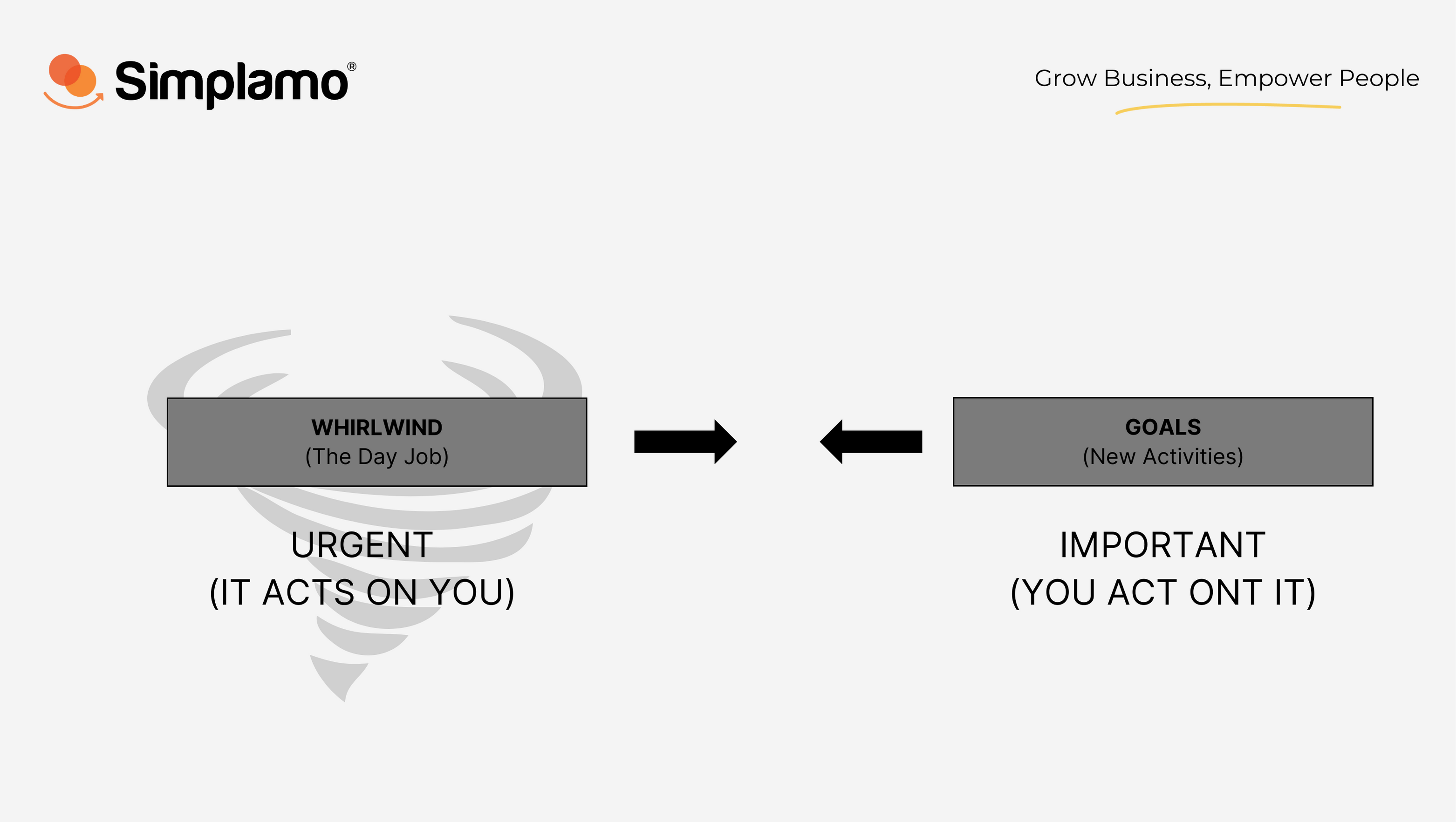
The Day Job – WHIRLWIND
“The 4 Disciplines of Execution” is not written to teach you how to manage the whirlwind. Instead, these four disciplines are designed to help you deploy your most crucial strategy right amid your whirlwind.
II. The 4 Disciplines of Execution – 4DX
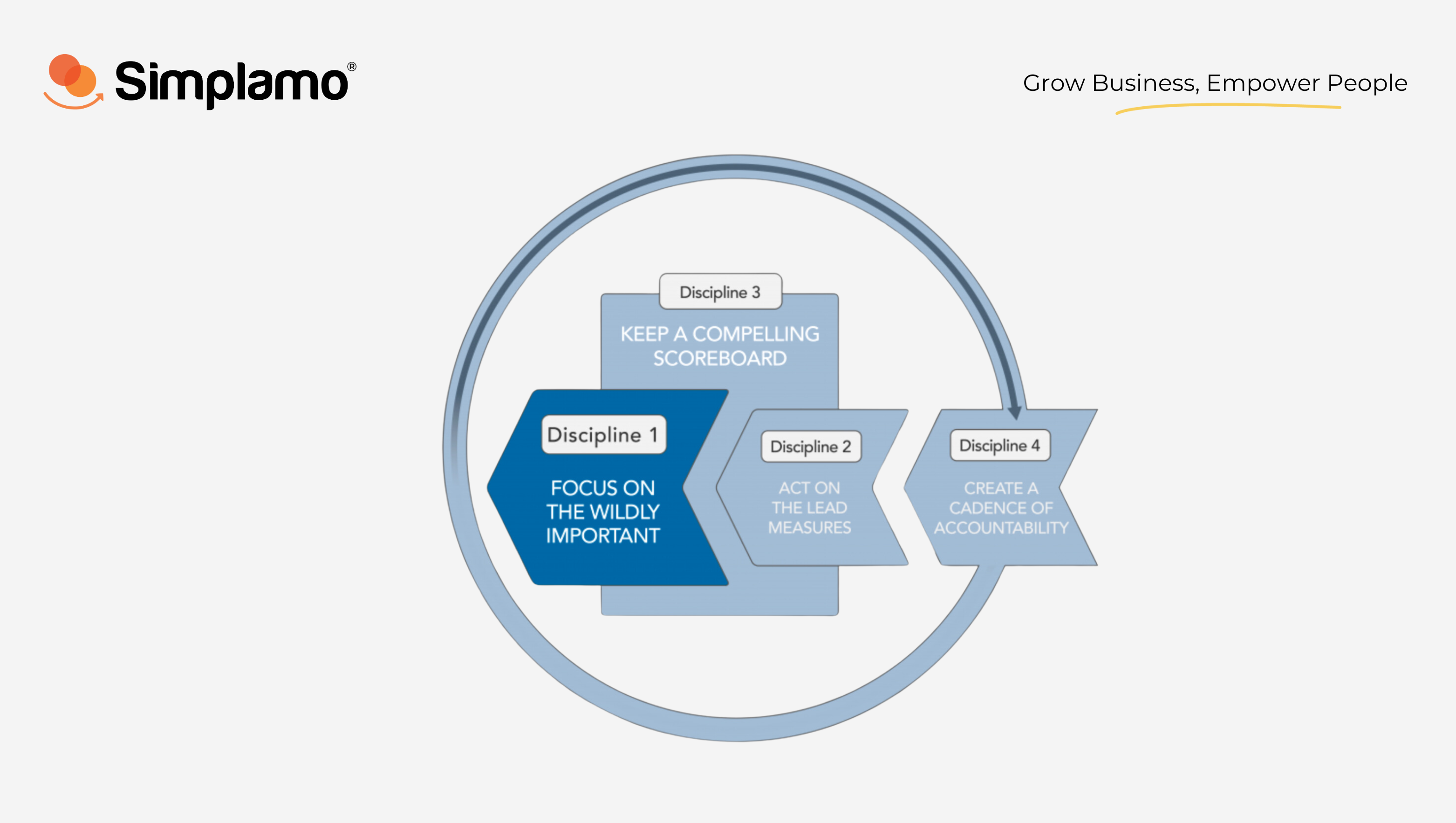
The 4 Disciplines of Execution – 4DX
Discipline 1: Focus on the Wildly Important
The Wildly Important Goal (WIG) is an objective that requires complete achievement beyond the daily whirlwind of tasks. It holds the strategic key and has the potential to make a transformative impact.
Despite its straightforward definition, identifying and prioritizing wildly important goals presents a common challenge for leaders. Driven by intelligence and ambition, saying no to a good idea is difficult for them, and with a great idea, it becomes even tougher.
But what they don’t realize is that when confronted with too many goals, their team may not even want to listen, let alone execute them.
- Conventional thinking: All of our goals are Priority 1. We can successfully multitask and succeed at five, ten, or fifteen important goals. All we need to do is work harder and longer…
- 4DX Principle: Many of our goals are important, but only one or two are wildly important. We call them WIGs. They are the goals we must achieve. Our finest effort can only be given to one or two wildly important goals at a time.
4 Rules for Identifying Wildly Important Goals (WIGs):
Determining a Wildly Important Goal is a challenge for leaders. Asking the right question upfront is crucial for aligning the team with the organization’s immediate priorities. The author offers the following insights:
To identify a Wildly Important Goal, don’t ask, “What is most important?” Instead, start by asking, “If every other area of our operation remained at its current level of performance, what is the one area where change would have the greatest impact?” This question shifts your thinking and helps pinpoint what you should focus on to make all the difference.
Leaders must also adhere to the following 4 rules:
- Rule 1: No team focuses on more than two WIGs at the same time – prevent overload amid the daily whirlwind.
- Rule 2: The battles you choose must win the war. The lower-level WIGs must ensure the success of the higher WIGs.
- Rule 3: Senior leaders can veto, but not dictate. Let managers decide their team’s WIGs.
- Rule 4: All WIGs must have a finish line in the form of from X to Y by when. For example, Increase the percentage of annual revenue from new products from 15 percent to 21 percent by December 31st.
Discipline 2: Act on the Lead Measures
Lead measures are the “measures” of the activities most connected to achieving the goal.
Discipline 1 takes the wildly important goal for an organization and breaks it down into a set of specific, measurable targets until every team has a wildly important goal that it can own. Discipline 2 then defines the leveraged actions that will enable the team to achieve that goal.
The illustration below shows the relationship between lag measures and lead measures at the team level.
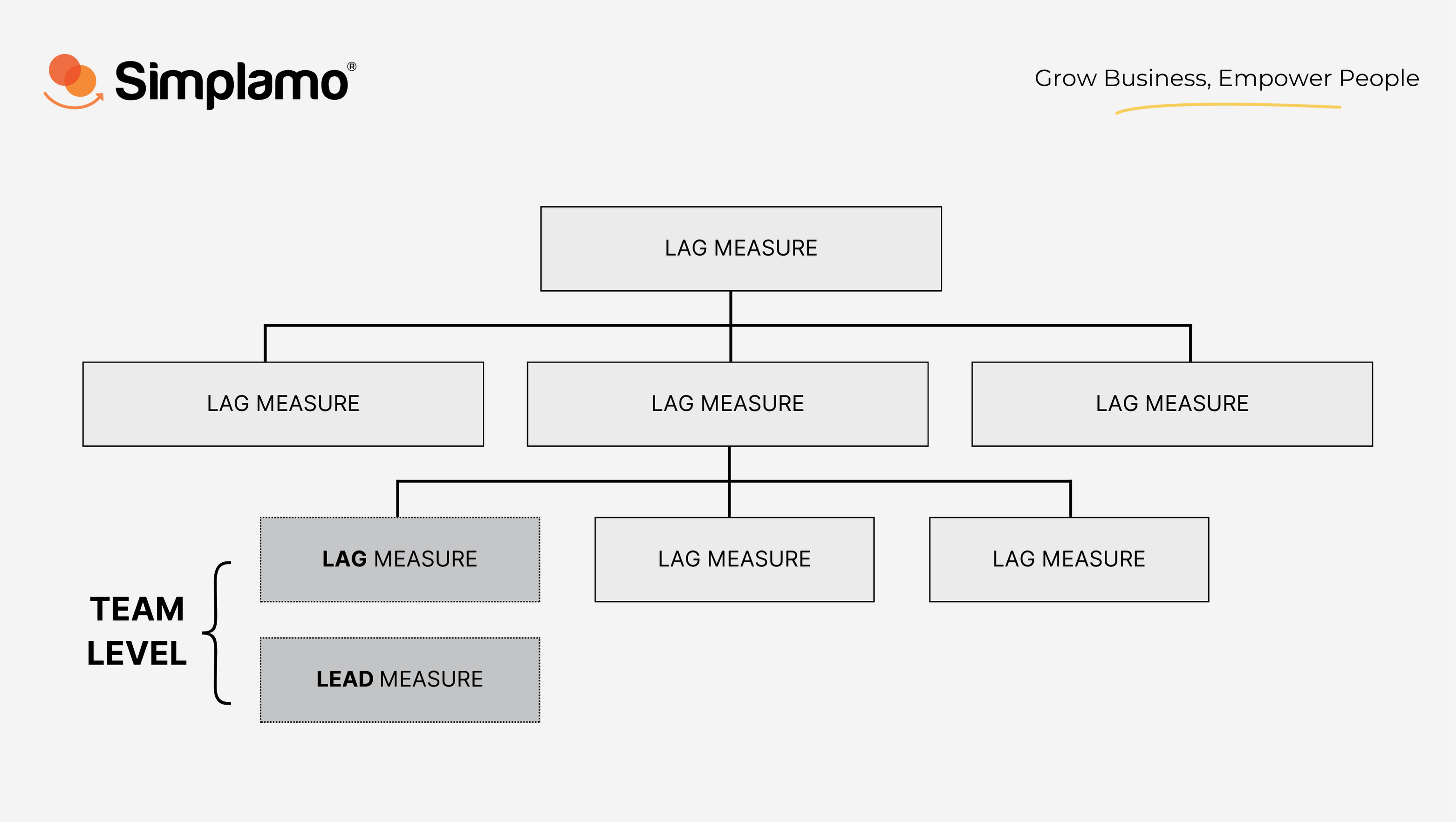
Act on the Lead Measures
While a lag measure tells you if you’ve achieved the goal, a lead measure tells you if you are likely to achieve the goal. While a lag measure is hard to do anything about, a lead measure is virtually within your control.
- Conventional thinking: Keep your eye on the lag measures: the quarterly results, the sales numbers, and pounds lost. Stress out. Bite your nails while you wait.
- 4DX Principle: Focus on moving the lead measures. These are the high-leverage actions you take to get the lag measures to move.
Managing a company by looking at financial data (lag Measures) is the equivalent of “driving a car by looking in the rearview mirror” – W. Edwards Deming
Example of an Action Measure:
WIG: Increase annual water production from 175 million liters to 185 million liters by December 31.
Action Measures for this WIG:
- Increase the rate of fully staffed work shifts from 80% to 95%
- Increase the compliance rate for preventive maintenance schedules from 72% to 100%
The two primary characteristics of Lead Measures:
- Predictive: Measure something that leads to the goal
- Influenceable: Something that we can influence
How to Determine Actionable Metrics:
When asked about Actionable Metrics, most leaders typically propose a strategy of breaking down Goal Metrics. For instance, if questioned on how to increase annual revenue, the response often involves boosting monthly revenue. So, how to increase monthly revenue? The answer is to increase daily revenue. However, when it comes to how to increase daily revenue, they often struggle to provide a clear answer.
In reality, the issue here is not that they don’t know; it’s a matter of focus—they haven’t done it. There are countless other tasks that need improvement and attention, and in their attempt to enhance everything, they find themselves trapped in the whirlwind of daily tasks, leading to no real change in the end.
When leaders invest time in observing and engaging with their team, they identify their own Actionable Metrics. Furthermore, collaboratively determining and focusing on these Actionable Metrics enhances team cohesion and commitment to their work.
“To achieve a goal you’ve never reached before, you must do something you’ve never done.”
Discipline 3: Keep a compelling scoreboard
The third discipline is to make sure everyone knows the score at all times so that they can tell whether or not they are winning. This is the discipline of engagement.
Without a regularly updated, visually clear scoreboard integrating goal and action metrics, they risk getting lost in the chaos. People become indifferent when unsure of their progress, but a quick glance at a scoreboard engages them by showing whether they are winning or losing.
In Principle 3, the strategy you place for your team, along with their Actionable Metrics and Goal Metrics, transforms into a tangible, compelling scoreboard.
- Conventional thinking: Scoreboards are for leaders. They are coach’s scoreboards that consist of complex spreadsheets with thousands of numbers. The big picture is in there somewhere, but few (if anyone) can easily see it.
- 4DX Principle: The scoreboard is for the whole team. To drive execution you need a players’ scoreboard that has a few simple graphs on it indicating: Here’s where we need to be and here’s where we are right now. In five seconds or less, anyone can determine whether we are winning or losing?

The players need to know their current points to compete effectively
Characteristics of a motivational scoreboard for players:
- Is it simple? – It needs to be straightforward
- Can I easily see it? – It should be something the entire team can easily see
- Does it show lead and lag measures? It should show both the lead and lag measures. This truly connects the scoreboard to reality
- Can I tell at a glance if I’m winning? – It must tell you instantly whether you are winning or losing
True team cohesion comes from celebrating the “small wins” on this scoreboard. Create an uplifting scoreboard for your team and experience the positive change it brings.
Discipline 4: Create a cadence of accountability
The fourth discipline is to create a cadence of accountability, a frequently recurring cycle of accounting for past performance and planning to move the score forward.
Discipline 4 is where execution actually happens. As we’ve said, Disciplines 1, 2, and 3 set up the game; but until you apply Discipline 4, your team isn’t in the game.
- Conventional thinking: Accountability on our team is always top-down. We meet with the boss periodically and he lets us know how we’re doing and what we should focus on next.
- 4DX Principle: Accountability on our team is shared. We make commitments and then we’re accountable to our boss, but more importantly, to each other, for following through.
Meeting for Wildly Important Goal
In Principle 4, your team should conduct a WIG Meeting at least ONCE A WEEK, keeping it brief, not exceeding 30 minutes. The agenda is predetermined, ensuring a swift session. This helps establish a consistent Rhythm of Accountability each week to drive progress on critical tasks.
Why weekly and not daily or monthly? The authors discovered that a week is an ideal timeframe in most organizational units. It’s short enough for focus and high attention but long enough for commitments made in these meetings to be effectively fulfilled.

Weekly Meetings – ideal for regular performance tracking in the organization
Three-part Agenda for a WIG Meeting:
1. Account: Report on last week’s commitments (completed or not, outcomes).
2. Review the scoreboard: Learn from successes and failures (review lag measure, lead measure, propose the suggestion).
3. Plan: Clear the path and make new commitments.
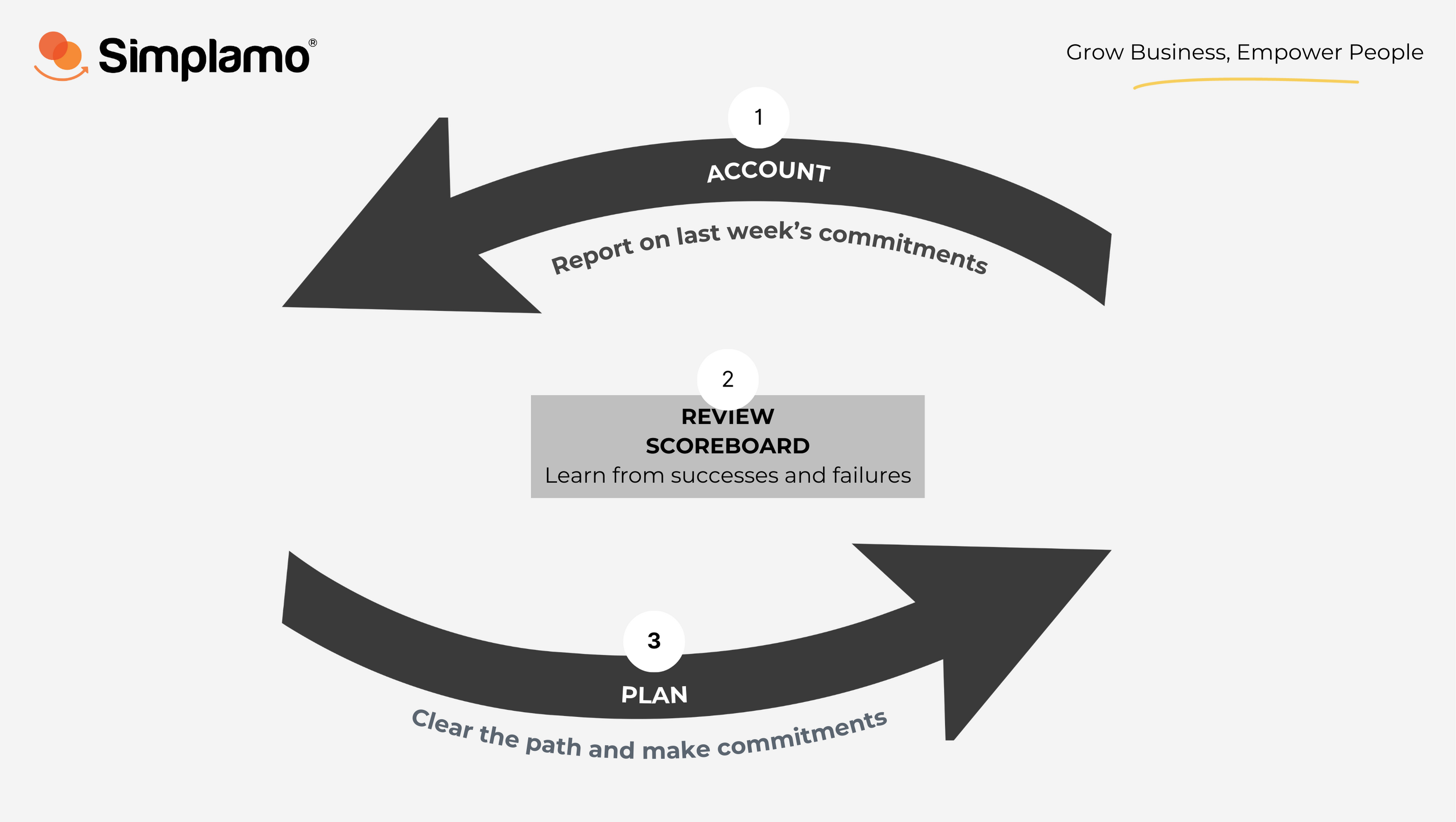
Three-part Agenda for a WIG Meeting
The above is the entire summary of the book “The 4 Disciplines of Execution”. When presented to leaders, most believe that their company is already implementing some parts of the 4 Disciplines, or that it is too easy to execute.
However, in reality, mastering the 4 Disciplines of Execution is not easy, and it is only when you take it seriously, practice it diligently, remain open, and continually improve every day that these principles truly come alive within an organization, yielding remarkable results.
With over 1500 successfully implemented projects as clear evidence, not to mention the numerous companies that have successfully applied the 4 Disciplines since the official release of the book in 2012.
Learn more: Implementing the 4 Disciplines of Execution (4DX): 5 Stages of Change
III. Simplamo – The 4 Disciplines of Execution Software
You aim to integrate these 4 Disciplines of Execution into your organization, recognizing that mere theoretical understanding is insufficient. What you need is a software solution, a dashboard to visualize WIGs, Lag & Lead Measures, monitor scoreboards, and analyze weekly meeting reports.
Moreover, using software will help you apply these 4 Principles to your business faster. Your team can easily understand your ideas, and everyone can use the same software to execute goals.
Getting Started with Simplamo – The 4 Disciplines of Execution Software. It helps you easily build and manage goals effectively with your team, fostering a rhythm of responsibility within the organization and uniting the team. Furthermore, Simplamo offers additional features to enhance the operational structure of your organization (Vision, Organization Chart, People Engagement, Process, etc.).
In the upcoming section, Simplamo will showcase 4 key features, each embodying one of the 4 Disciplines of Execution, and elucidate their seamless integration within the software:
1. Wildly Important Goal (WIG): Encompasses Company/Department/Individual goals (quarterly and annual goals) with specific personnel assigned and clear deadlines.
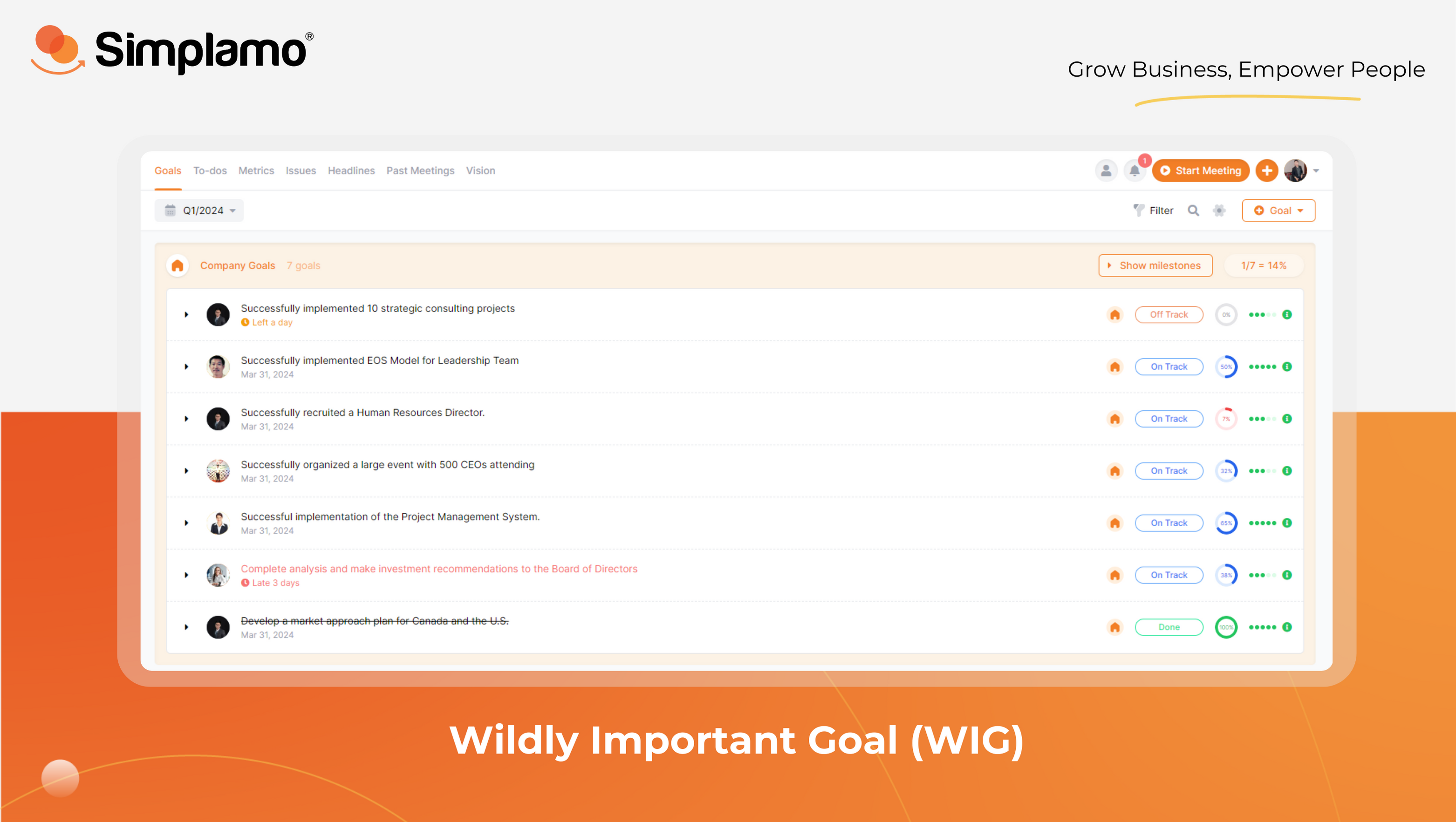
Wildly Important Goal (WIG) on Simplamo
2. Lag & Lead Measures: Includes three types of metrics for easy selection based on each WIG, allowing straightforward check-ins and weekly progress reporting.
3. Compelling scoreboard: Weekly performance scoreboard (metrics), Green for achieved, Red for not achieved, strongly motivating team competitiveness and providing a clear indication of ‘winning’ or ‘losing’.
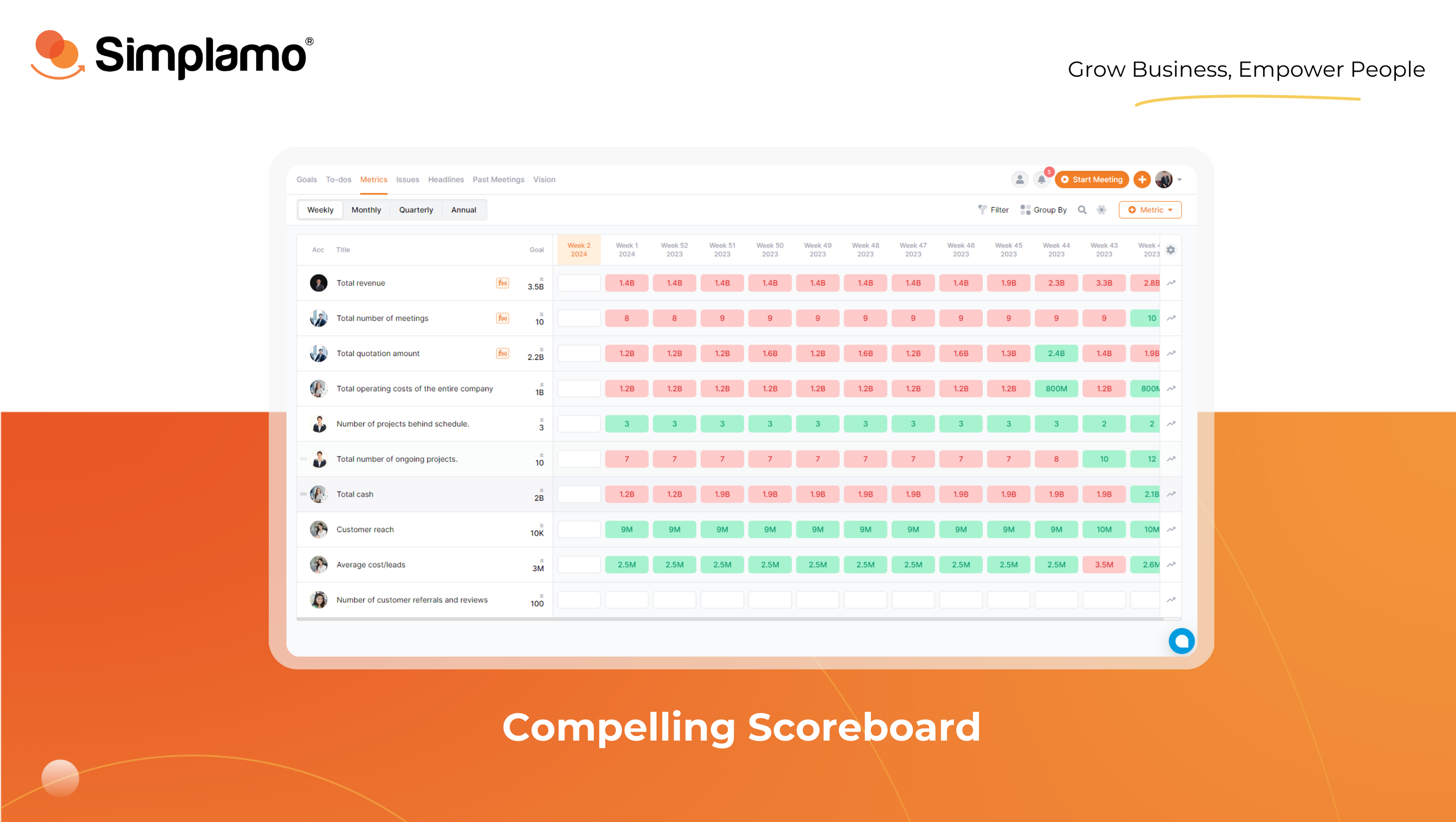
Compelling Scoreboard on Simplamo
4. Weekly WIG Meetings: The weekly meeting framework on Simplamo, consisting of three main sections and four other crucial components, involves the direct review of the scoreboard and metric during the meeting. It facilitates creating to-dos and tracking their completion, identifying and addressing issues in three steps, documenting meeting content, and sending automatic reports to ensure no member overlooks or forgets meeting details.
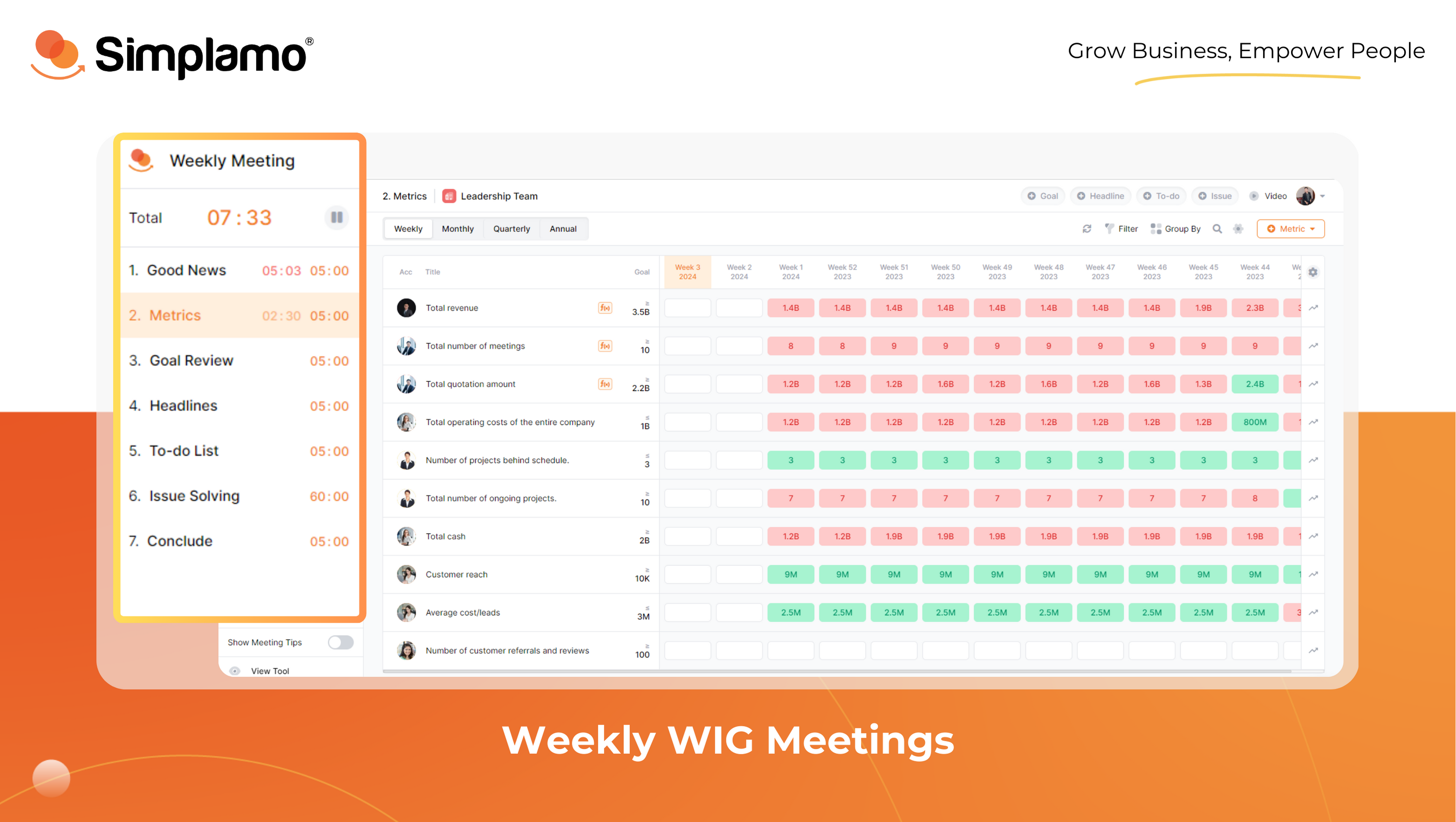
Weekly meeting on Simplamo
At the weekly meeting, all data related to goals, scoreboards, and to-dos (last week’s commitments) are centralized, providing a convenient platform for the entire team to swiftly review. This time-efficient approach enhances goal alignment and individual accountability.
By applying discipline and seriousness to these 4 Execution Principles through Simplamo software, you and your team will gradually establish a consistent workflow, keeping WIGs consistently in focus amid the daily whirlwind. Effectively executing these principles will be the differentiator for successful organizations, always progressing forward.
When you start with Simplamo, you’ll receive comprehensive guides and examples to create WIGs, Lead Measure, and Scoreboards tailored to your industry and scale. Throughout the usage, the Simplamo team will assist you in digitizing data into the software, coordinating weekly meetings, and ensuring a vibrant and accountable execution process within your organization.
——–
Simplamo is a modern and scientifically-based management software that uniquely combines KPI and OKR, making every aspect of operation simple and approachable for every employee. It relieves pressure for leaders, allowing them to focus on important missions and optimize work performance for the business.
Experience Simplamo and feel the change in just 4 weeks! Register for a Simplamo demo at: https://app.simplamo.com/sign-up

